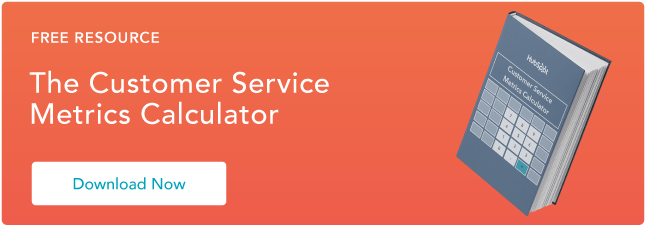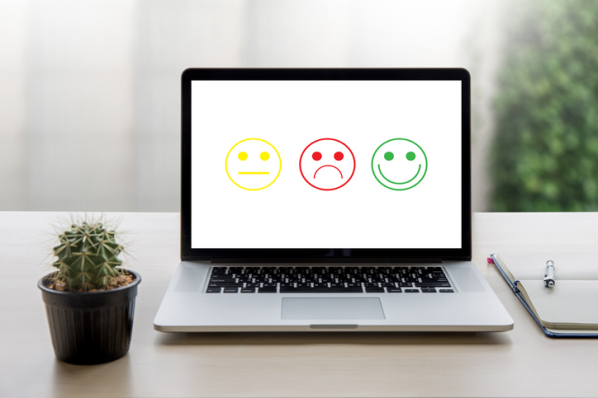In this post, we'll break down how to create an effective NPS question and provide some tips you can use to optimize the results to your advantage.
What is the NPS question?
The classic NPS question is: How likely are you to recommend us on a scale of 0 to 10? In this case, the word 'us' can represent your business as a whole, your products, or your services. While this style of the question is most commonly used, you can reword the language to fit your specific needs as well as capture additional customer feedback using open-ended follow up questions.
Let's talk a little bit more about how this question is structured.
NPS Question
Your NPS question should start by asking the user how likely they are to recommend your business, product, or service to another customer. Underneath the question, there should be a numeric scale the customer can use to measure their likelihood to make the referral. In some cases, the NPS survey includes an additional comment section where users can leave specific feedback regarding their score.
The below image gives a visual representation of what the NPS question looks like.

Respondents can be grouped into three categories based on the rating they give on the scale of 0 (not at all likely) to 10 (extremely likely):
- Promoters: This group responded with a rating of 9 or 10. These are your highly satisfied and loyal customers.
- Passives: This group responded with a rating of 7 or 8. These customers are generally satisfied with your business but not as enthusiastic as your promoters.
- Detractors: This group responded with a rating of 0-6. These are your unhappy customers with a low likelihood of repeat purchases or singing your praises to a friend.
You can then use this information to calculate your overall NPS.
NPS questions should always be neutral and never try to persuade your customers to leave a promoting score. After all, your company benefits from hearing both positive and negative feedback from your customers.
Disingenuous positive scores may make your customer service team feel good, but they won't help your business grow and develop.
Instead, your NPS questions should be simple and to the point. Let's take a look at a few examples of how to do this next.
NPS Question Examples
Most NPS question examples start with the standard 'how likely are you to recommend us to a friend?' NPS question. You can then make a few minor changes so the question is specific to your industry or focused on a particular product or feature. One example is: How likely are you to recommend [insert specific product] to a colleague? Another example is: How likely are you to tell a friend about our [insert specific service feature]?
To get more specific, let's say HubSpot was interested in including an NPS question in a survey. Here are a couple of examples of how that could go.
Example 1: NPS Question for HubSpot's Service Hub
The image below shows an NPS question example for HubSpot's Service Hub.

NPS question: How likely are you to recommend HubSpot's Service Hub to an associate or colleague?
What you get from the results: Net Promoter Scores for this question would give marketing, sales, and customer service teams useful information about how our customers feel about this product overall.
Example 2: NPS Question for HubSpot's Company Culture
The image below shows an NPS question example for HubSpot's Company Culture.

NPS question: How likely are you to recommend HubSpot to a friend or family member as a great place to work?
What you get from the results: Net Promoter Scores for this question would give leadership and culture teams helpful insight into how satisfied employees are with HubSpot as an employer.
For more NPS question examples and insights into the NPS survey process, check out the informational video below from Customer Thermometer.
NPS surveys can provide your company with an astonishing amount of information about your customers. However, since it's a one-question survey, you only get one chance to ask a really solid question.
Up next we'll discuss some key best practices to getting it just right.
Top 5 NPS Question Best Practices
1. Keep It Short
After a customer completes a purchase or service request, it's likely they'll immediately shift their thinking to the next task in their day.
Unless their experience is remarkable, most customers won't be focused on providing your company with feedback. That's why NPS is so effective with customers. Customers only have to answer one quick question then they can carry on with their day.
However, they'll be less inclined to answer that question if it looks more like a detailed paragraph. Remember, your customers are busy and once they've gotten their value from the transaction, they won't be eager to give you more of their time.
This is where it's beneficial to have a short and simple NPS question that gets directly to the point. Keep it to one or two lines of text so customers won't be intimidated by its length.
2. Use a Simple Scale
Many NPS survey providers will allow you to customize the survey and choose the scale that customers will use to respond to your question.
When deciding on the scale to provide, choose one that does not give your customers too many options. Having too large of a scale is more confusing for your customers and gives your team more varied responses that will be harder to categorize and report on.
The best NPS scales are either 1-5 or 1-10. Customers are most familiar with these ranges and will have an easier time filling out the survey. These scales make it simple for the customer to gauge their experience as well as for your team to analyze the survey results.
3. Be Specific
Even though your NPS question should be short, it should still be specific. Include certain products or features in your NPS question to get direct feedback.
Ambiguity won't necessarily hurt your survey, but you won't get as much value from the feedback because it will be hard to determine exactly what your customers are happy or unhappy about.
Instead, intentionally highlight the product or feature you're referring to when asking customers to provide an NPS. This not only gives your team direct feedback, but it also presents the opportunity for you to further customize your NPS surveys.
And here's a pro tip: Rather than presenting the same NPS survey for each product or service, create unique NPS surveys that each derive unique feedback about specific offers. This gives you a more complete picture of the customer's experience with your business.
4. Include a Comments Box
Many traditional NPS survey tools only include the NPS question and the scale that customers use to respond with.
However, when you're selecting your customer feedback tool, choose one that lets you include a comments section beneath the scale. Customers can use the comments section to further explain the reason for their score.
By including a comments section on your NPS survey, you can gather qualitative data about your customers' experience with your company. This helps with responding to negative scores because your customer service reps know exactly why the customer is upset.
They can craft a personalized response highlighting the customer's distress and provide a follow-up solution or workaround. That type of insight pays off in dividends when reducing customer churn at your company.
5. Add a 'Thank You' Message
This, admittingly, has nothing to do with crafting your NPS question. However, it is a vital part of the NPS survey structure that is often overlooked.
You should always include a 'thank you' message at the conclusion of your survey to thank customers for their participation. Remember, they don't get anything from filling out your survey, so the least you can do is thank them for their time.
When crafting your 'thank you' message, there's no need to overdo it. A simple, 'thanks for filling out our survey' should do the trick.
However, if you do want to go above and beyond, some brands like to specifically highlight how your feedback will help them improve their customer experience moving forward.
Best NPS Questions
The best NPS questions are short, simple, and specific. They give your customers the opportunity to answer honestly and input additional context to support their rating. It's also a good idea to thank your customers for taking the time to fill out your NPS survey since responses aren't necessarily rewarded or guaranteed.
In alignment with the best practices we discussed above, the image below highlights the main qualities of the best NPS questions. In other words, keep it short, sweet, and to the point.

A successful NPS survey can provide your organization with incredibly valuable insights regarding customer satisfaction. And any good survey starts with an effective NPS survey question.
Now's the time to start harnessing the power of NPS.
Net Promoter, Net Promoter System, Net Promoter Score, NPS and the NPS-related emoticons are registered trademarks of Bain & Company, Inc., Fred Reichheld and Satmetrix Systems, Inc.
Editor's note: This post was originally published in May 2019 and has been updated for comprehensiveness.
NPS
.png?width=112&height=112&name=Image%20Hackathon%20%E2%80%93%20Vertical%20(85).png)


![How I calculate net promoter score [formula & examples]](https://53.fs1.hubspotusercontent-na1.net/hubfs/53/%5BUse-Oct-14-2025-10-16-33-2257-PM.webp)



.jpg)




